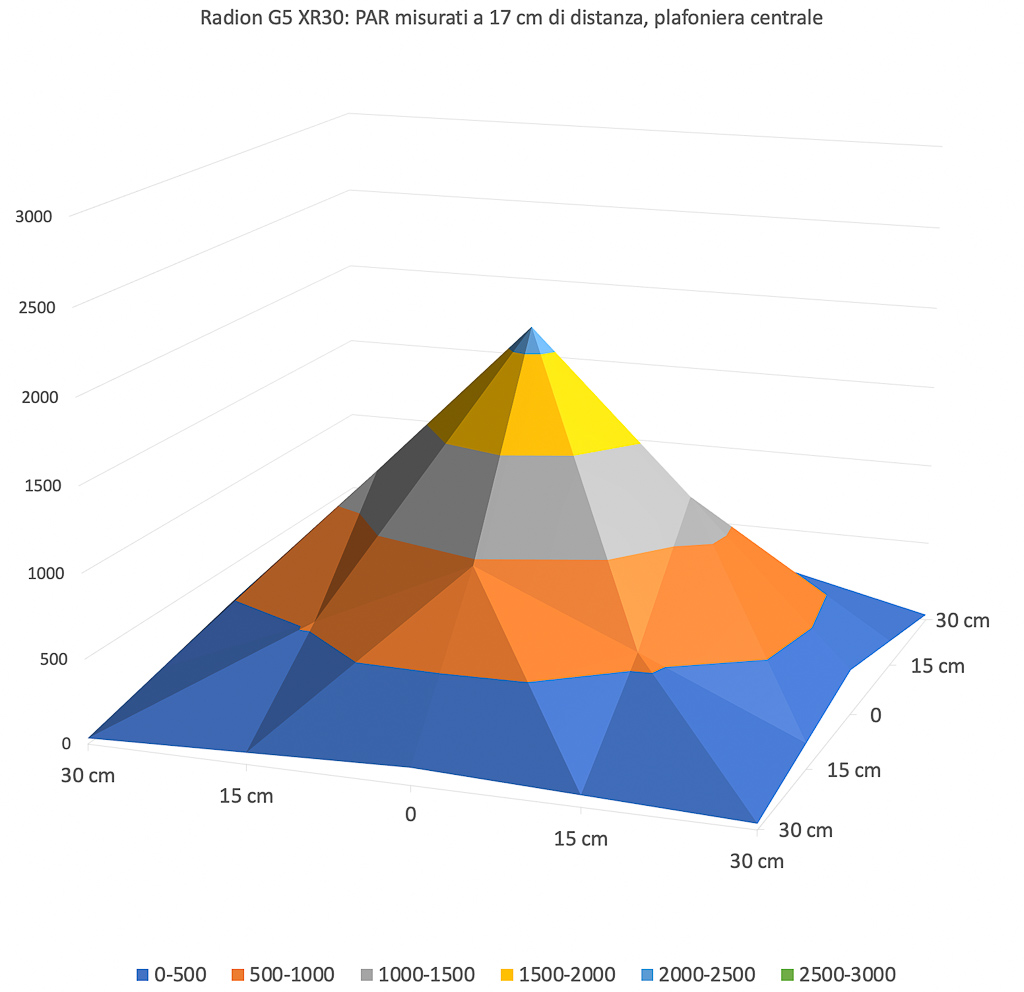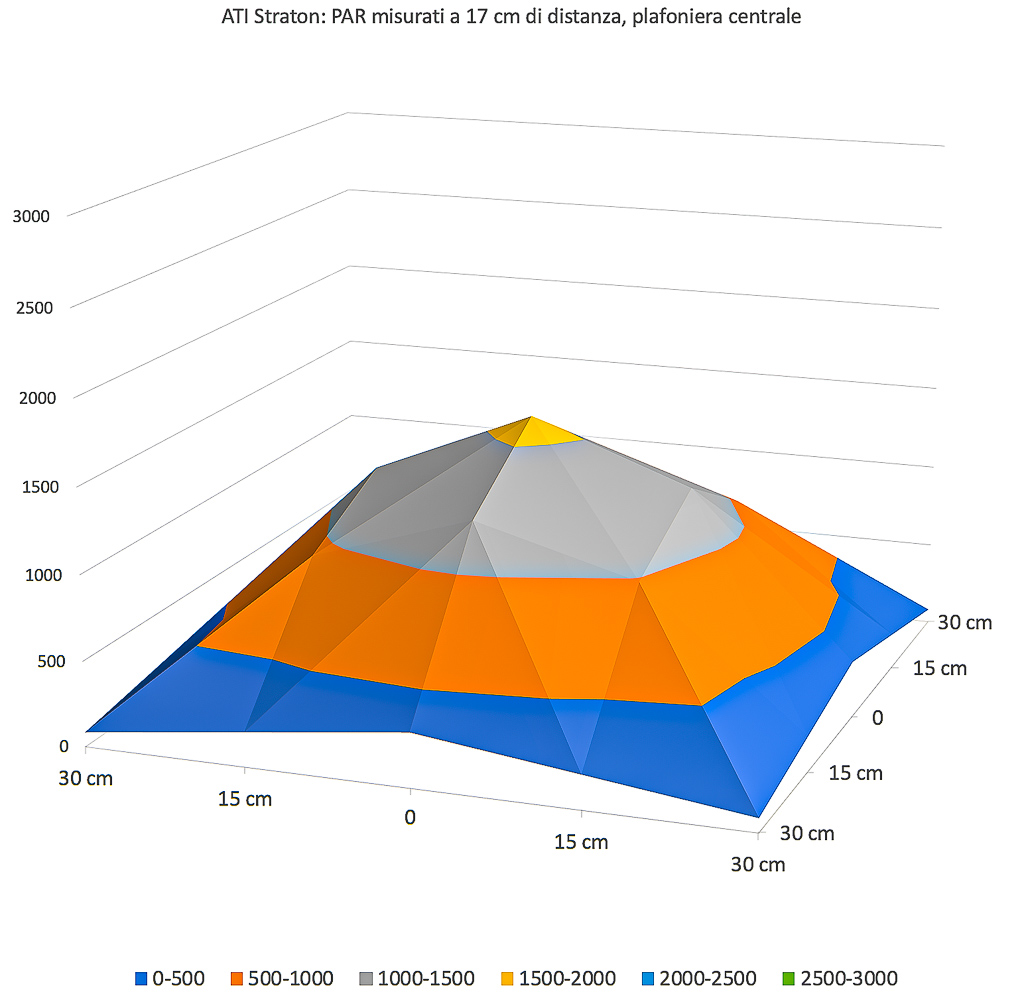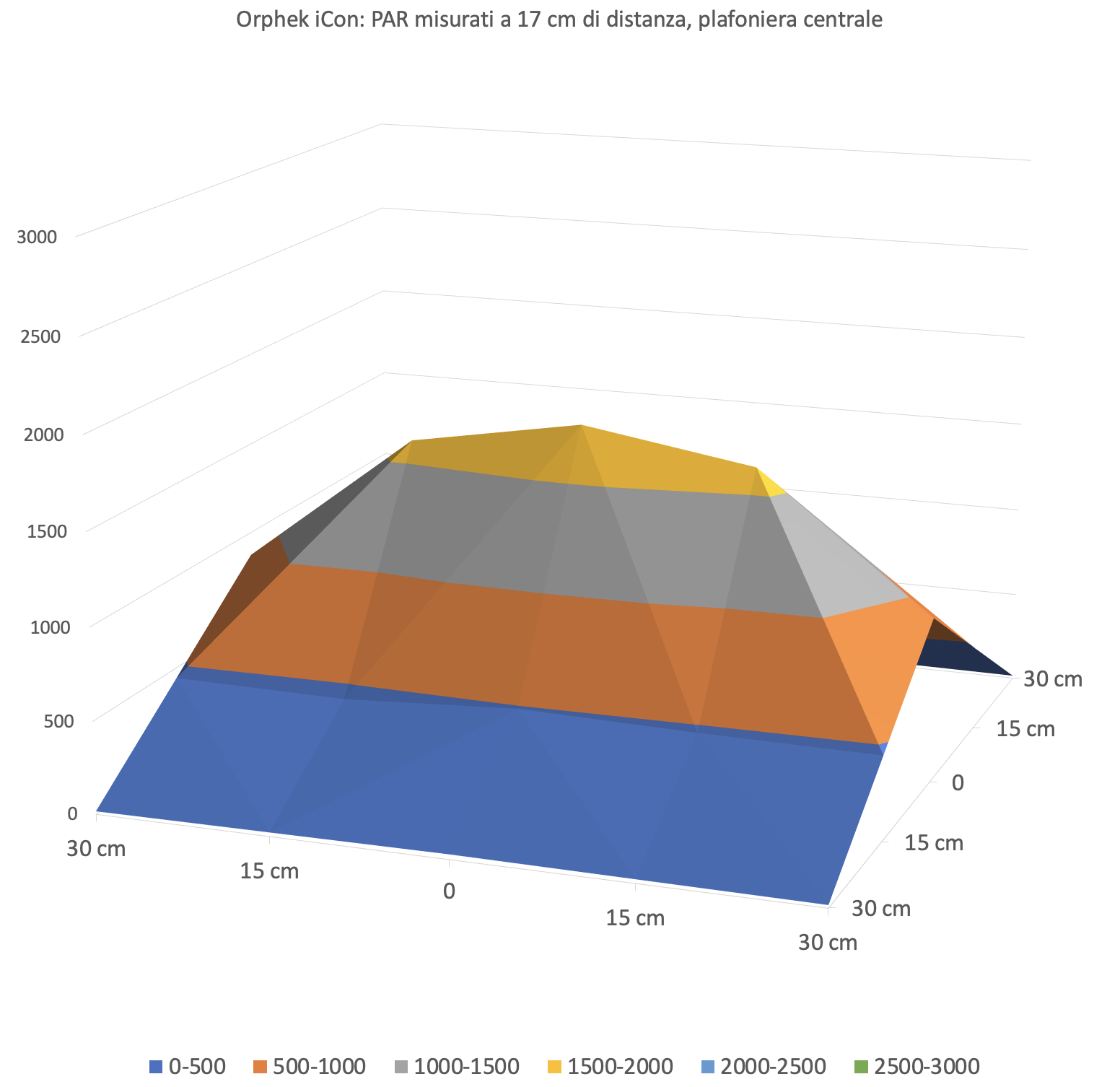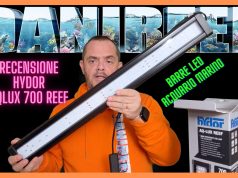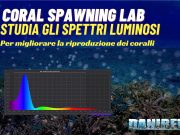Our new DaniReef LAB working method for PAR measurement of the GNC BluRay PRO
During the long nights spent on our forum (here) we always wondered how could we compare PAR from different ceiling lights. Even though we had the perfect device, the Quantum Meter MQ-510 di Apogee, we always referred only to the value measured at the centre at 20 cm of distance, more or less.
IThe Quantum Meter MQ-510 measures the PAR, expressed in PFFD that is photosynthetic photon flux density in μmol m-2 s-1. This device is calibrated to work underwater, so if it’s in air the measured value has to be divided by 1,32 that’s the dive factor. We have to do the conversion. The values you’re going to see are correct.

We decided to make a square base of 70×70 cm, we set 17 fiducial points where we placed the sensor Quantum Meter MQ-510 and we also made 3 lifts of 20, 40 and 60 cm for the ceiling light, in order to have the same distance from the sensor. This will allow us to create the curves which can be compared to other ceiling lights’s, all tested at the same distances. Notice that this distance is measured between the base of the sensor and the ceiling light. In reality it should be decreased of 3,5 cm that is the height of the measurement cylinder and increased by 0,5 cm that’s the dimension of the spacers that lift the ceiling light.

So the three measurements are made from 17, 37 and 57 cm of distance. Because they’ve been done in air, they will be corrected.
PAR measurement from 17 cm of distance
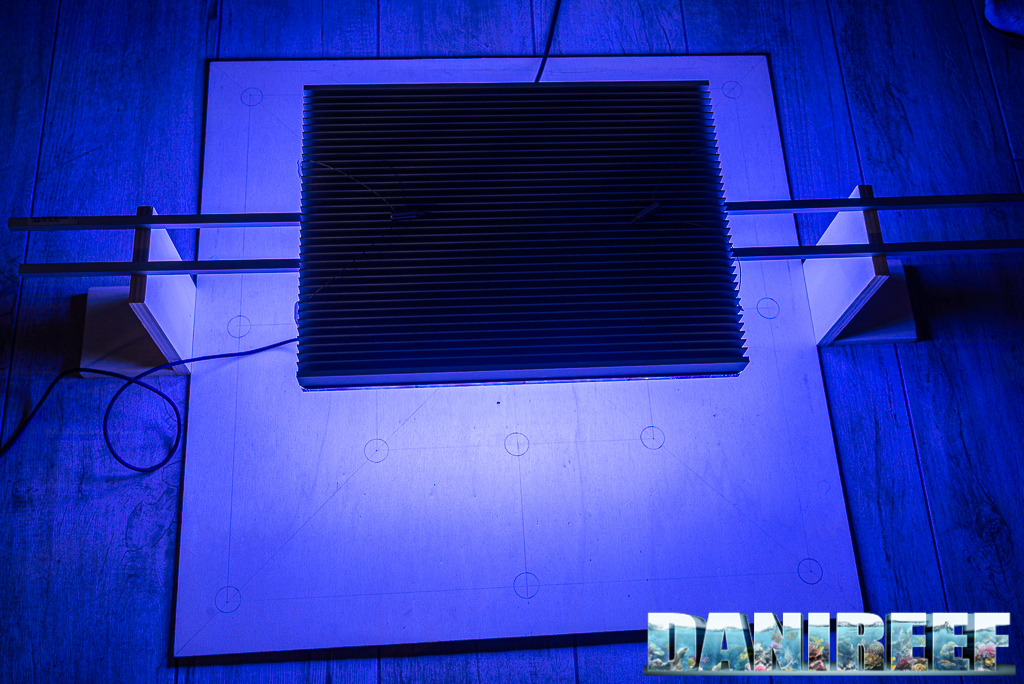
The ceiling light, as usual, has been placed at the canonical 17 cm of distance from our reading panel. The points non included on the board have been estimated in the table here below:
These are the collected values:
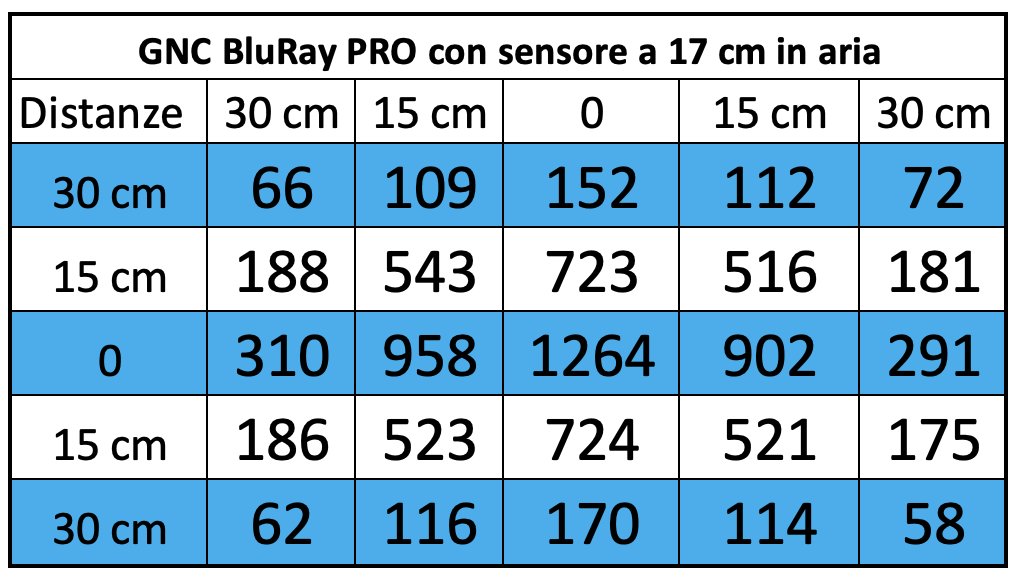
And this is the corresponding chart. The scale of the graphs is identical to that of every other ceiling light we tested in the DaniReef LAB in order to compare similar lamps.
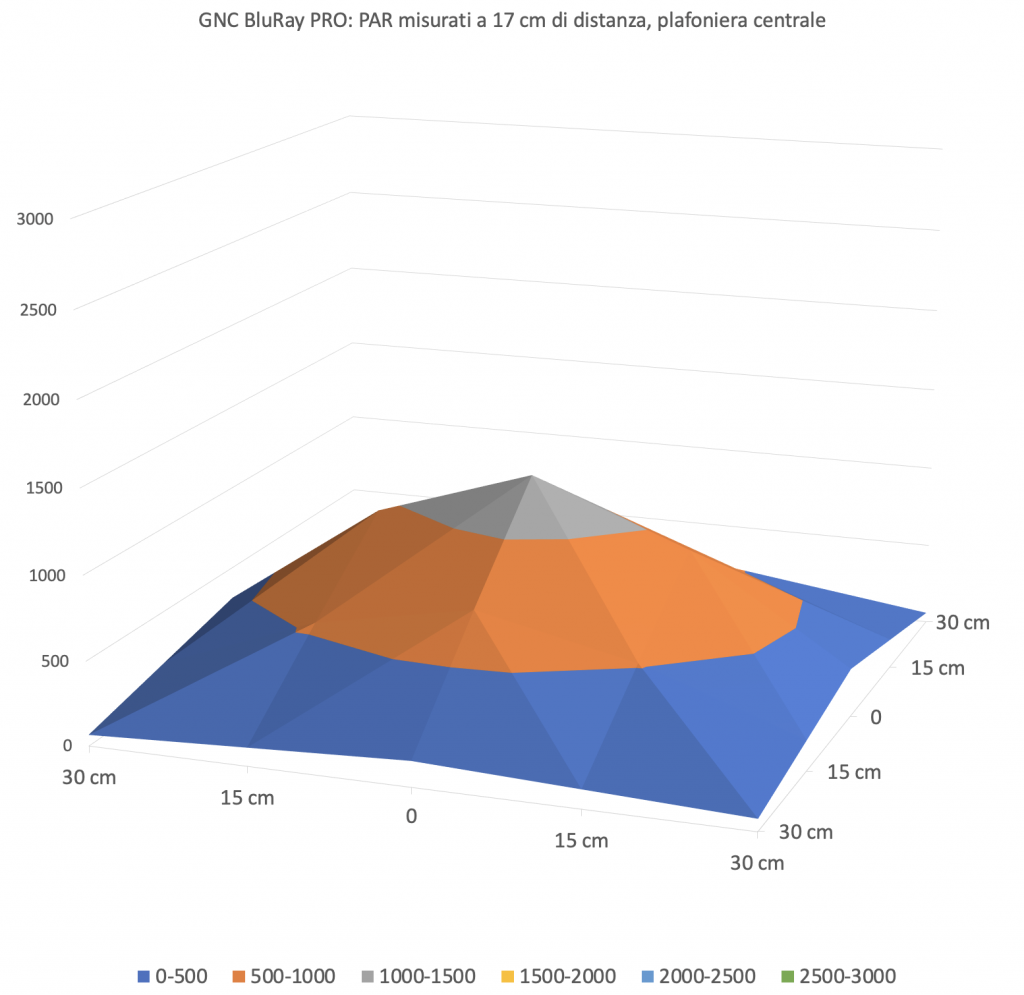
The first measurement has a limited distance from ceiling light and sensor. So the expressed PAR are higher in the middle but especially very full on all the sides. This is normal for a ceiling light of this coverage.
The graphs have all the same scale and the color is the same at the same PAR level. The comparison between the best ceiling lights of the same class underlines a better middle-sides coverage. The PAR values are lower, in fact they are slightly above the grey zone, on 1200 PAR, but you also have to remember that the GNC BluRay PRO has the lowest power consumption of the ceiling lights considered: only 140 watt, while the ATI Straton have 211, Radion 203 and the Orphek iCon 229. That is about 45-63% less.
PAR measurement from 37 cm of distance
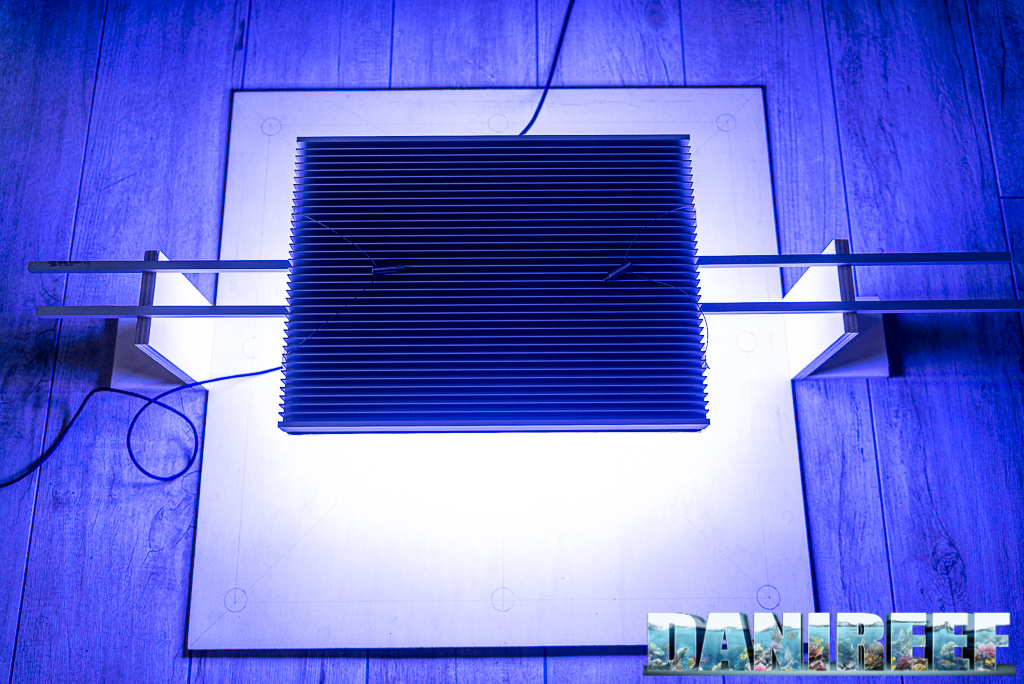
Then we placed at 37 cm of distance.
These are the collected values:
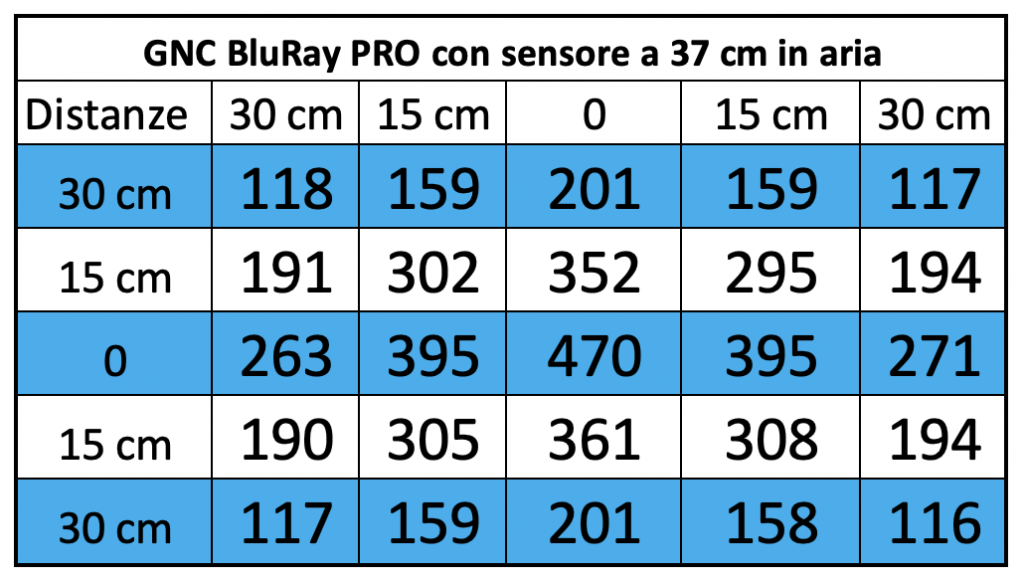
And this is the corresponding chart:
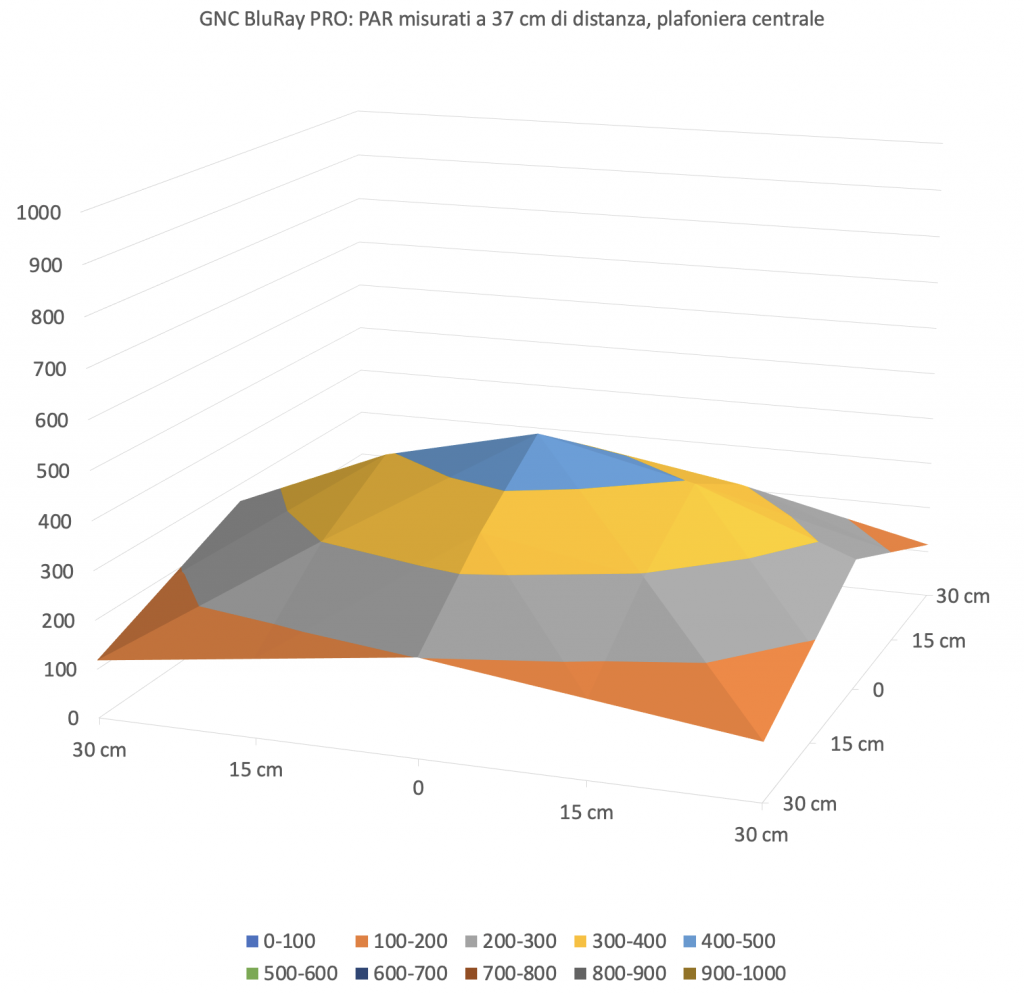
Increasing the space between ceiling light and sensor, the curve becomes very full. The peak value and that one on the sides are very close. The coverage is perfect. The value in the middle decreases from 1264 to 470 μmol m-2 s-1.
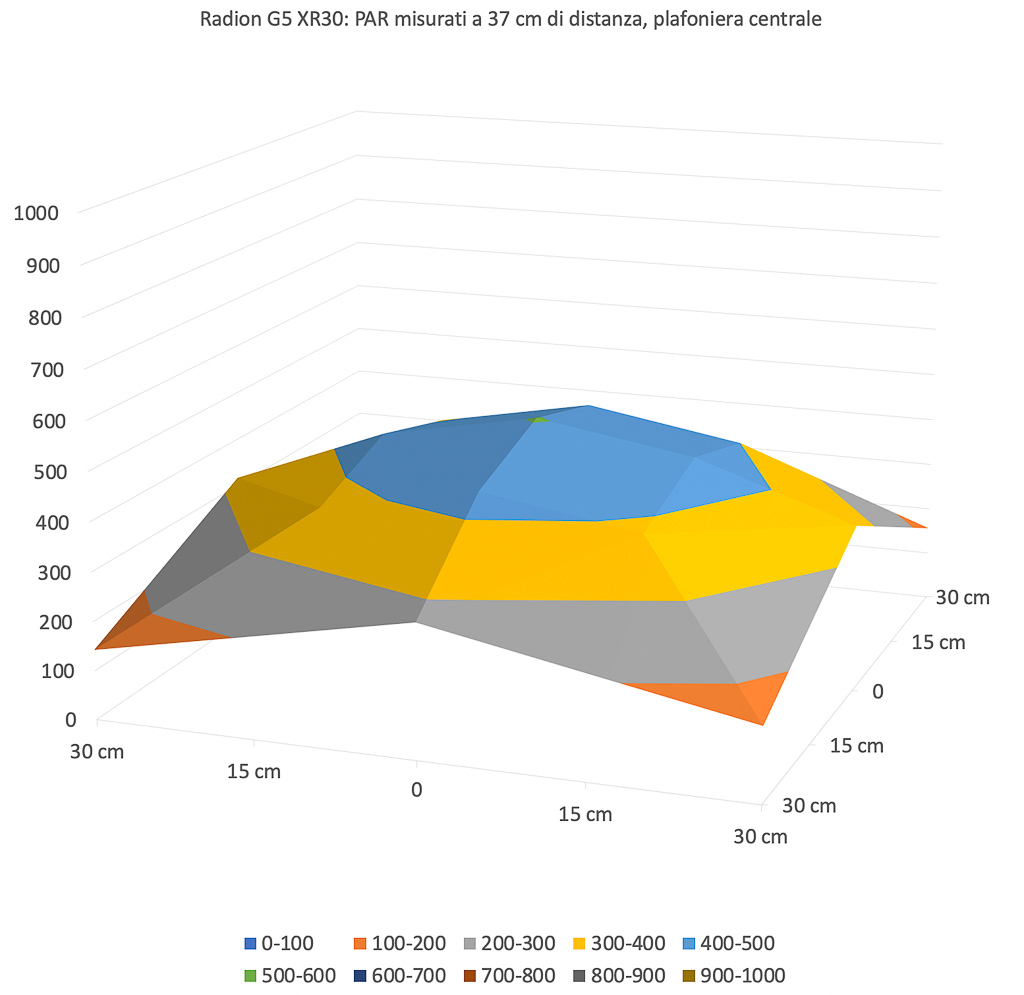
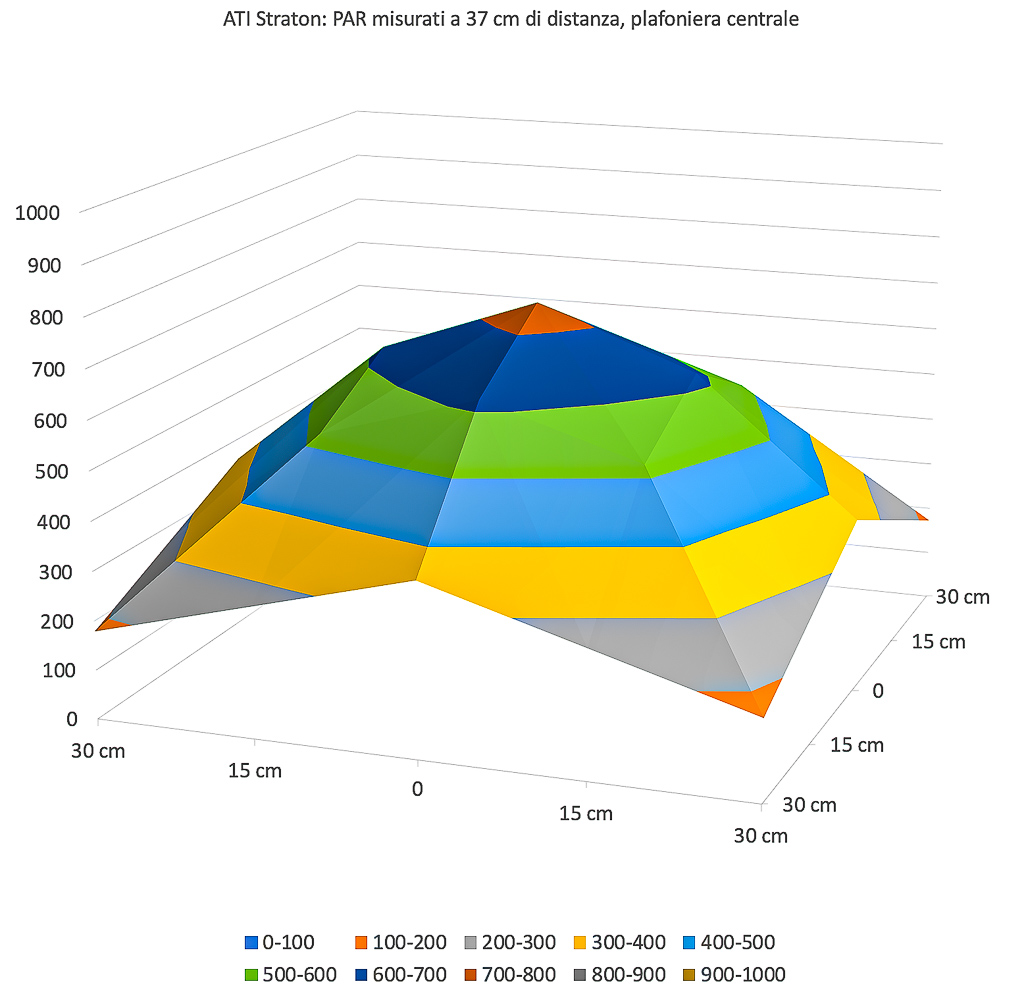
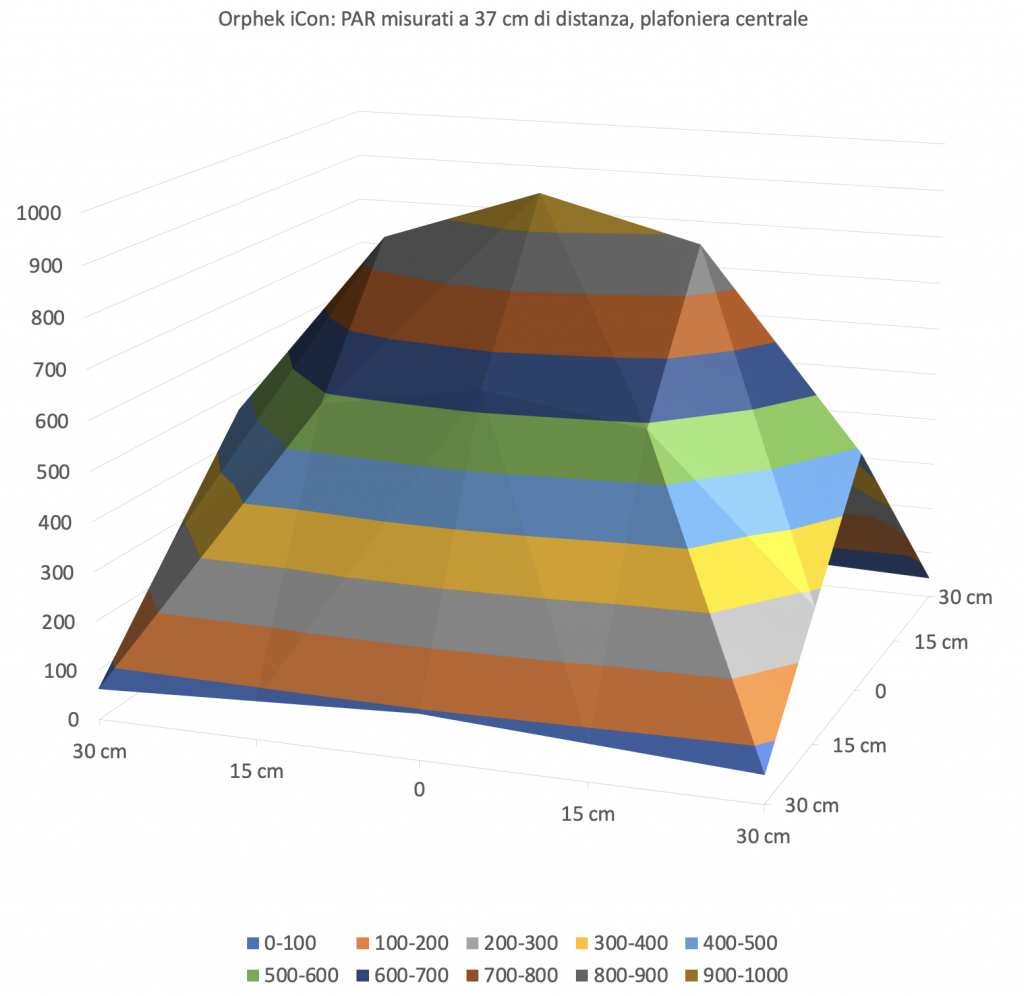
Moving at 37 cm the coverage curve is practically identical to the Radion’s. This one is slightly powerful all over the area. But remember that the consumption is 45% higher! In this configuration Orphek has more PAR, but once again we have to consider the curve also basing on the consumption: 140 watt for the GNC BluRay PRO, 211 for the ATI Straton, 203 for the and 229 for the Orphek iCon.
PAR measurement from 57 cm of distance
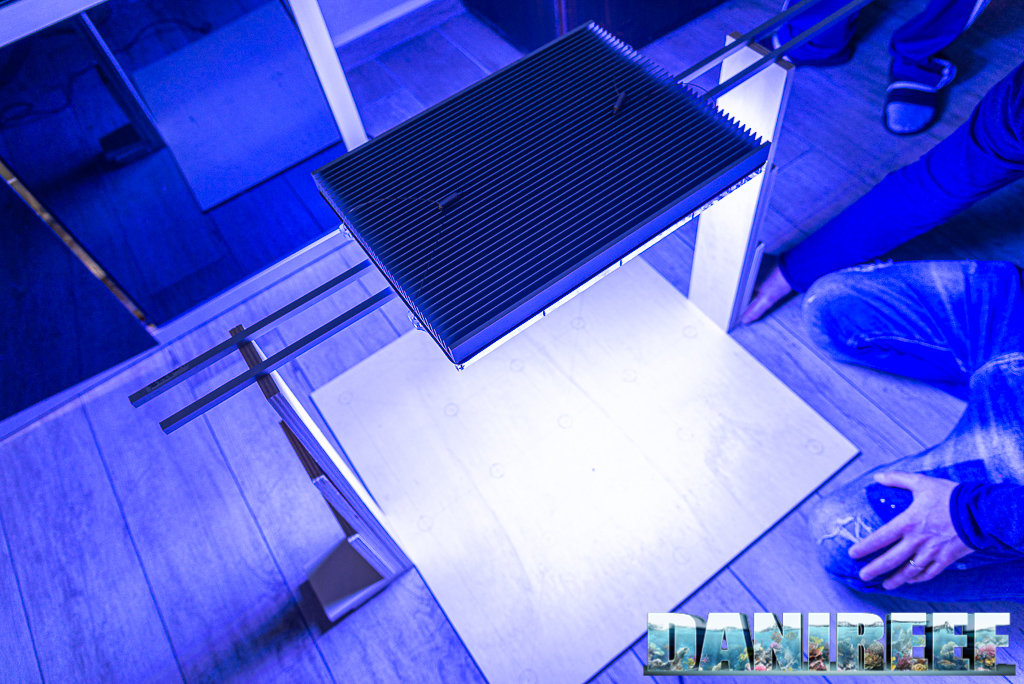
Finally we got as far away as possible, at 57cm.
These are the collected values:
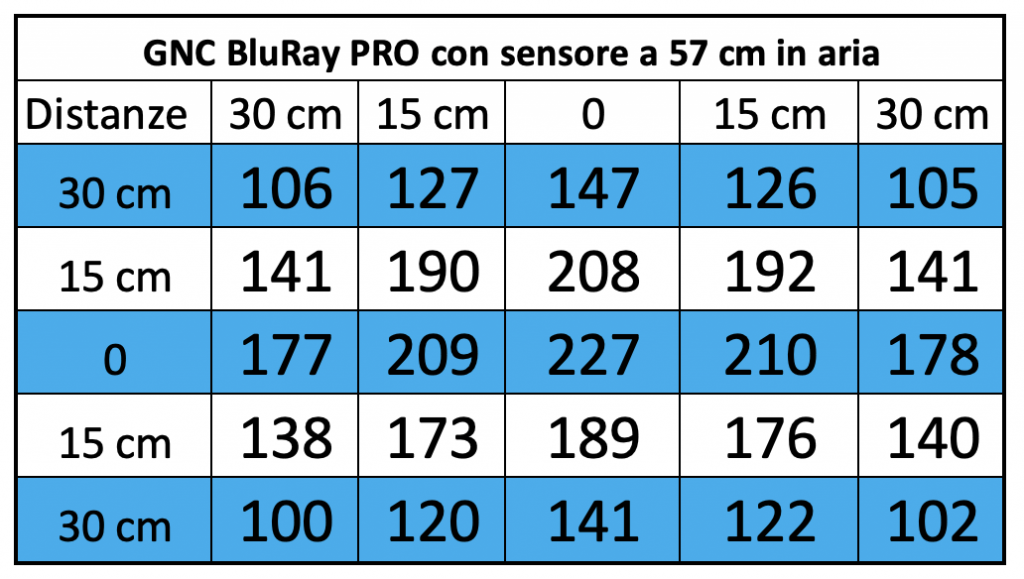
And this is the corresponding chart:
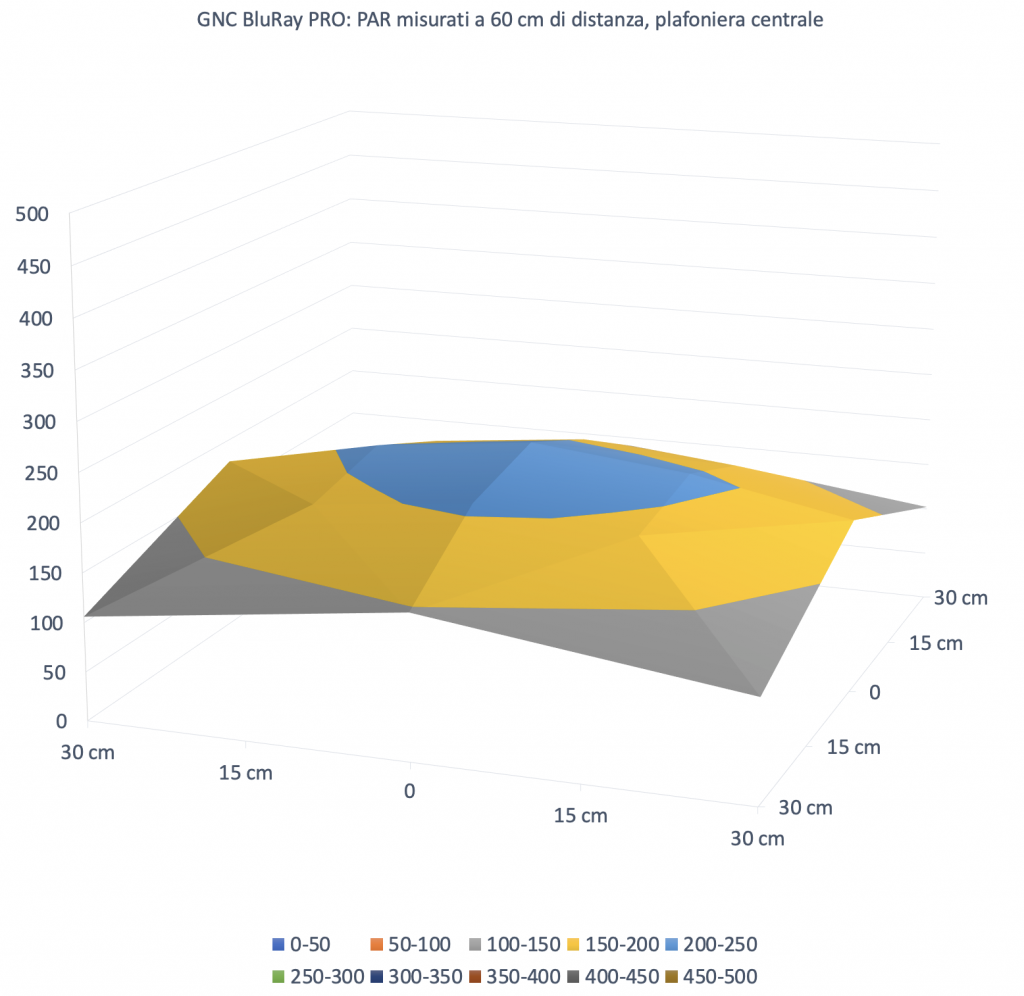
It’s enough a look at the chart to understand that the difference middle-sides in minimal, so the coverage is great. The value in the middle decreases again from 1264 to 470 a 227 μmol m-2 s-1.
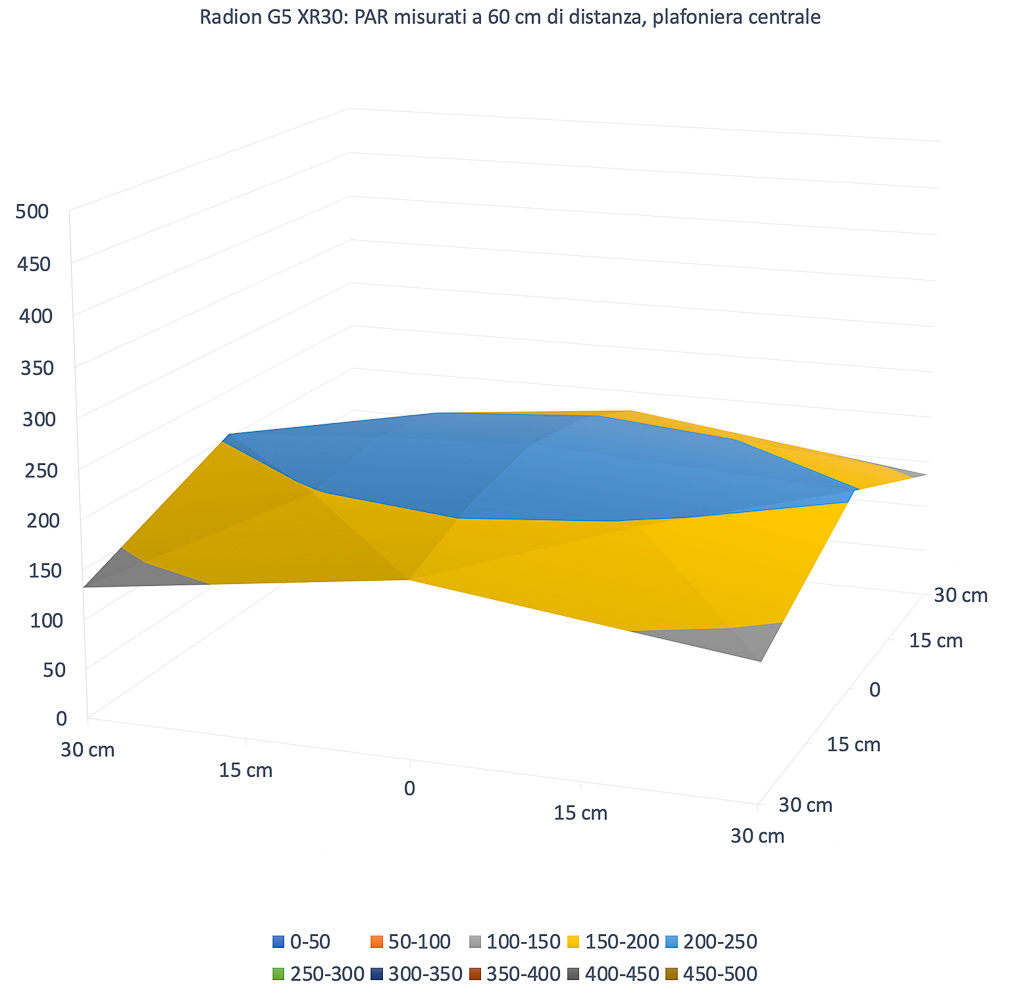
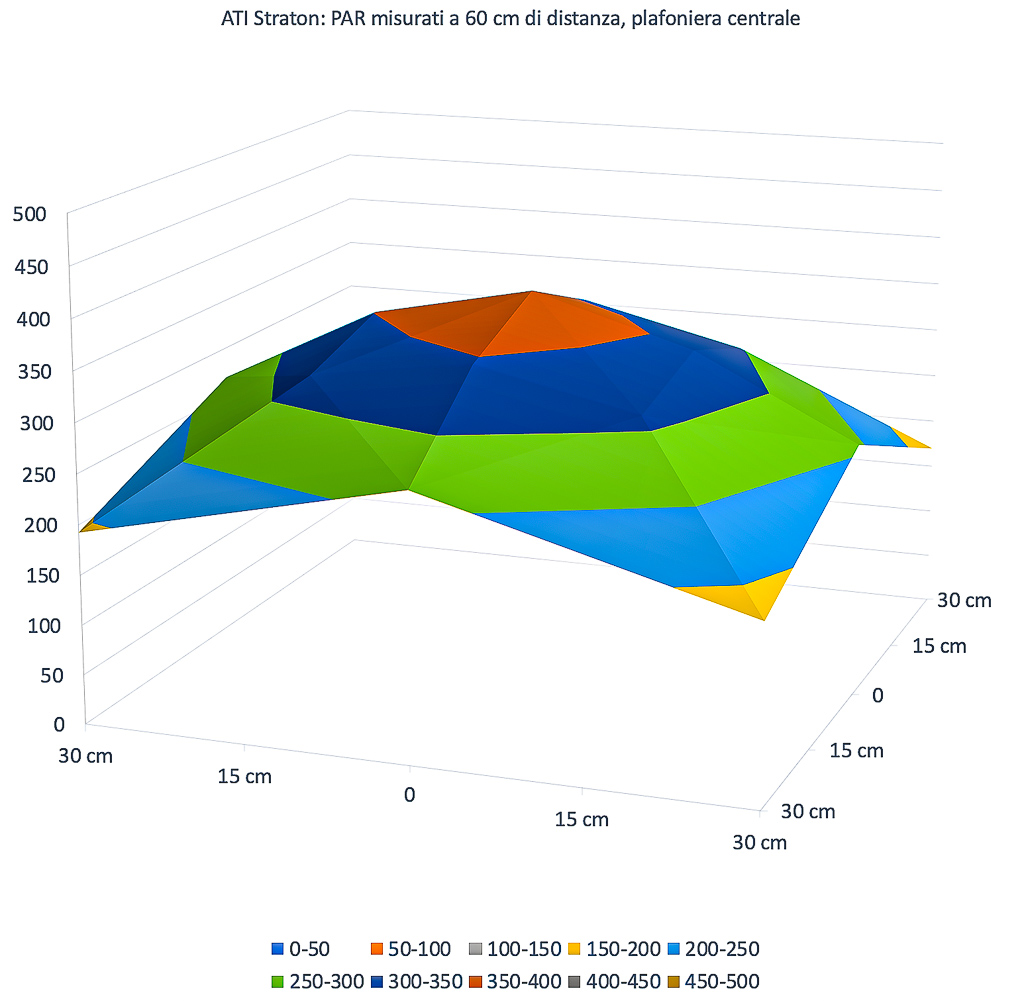
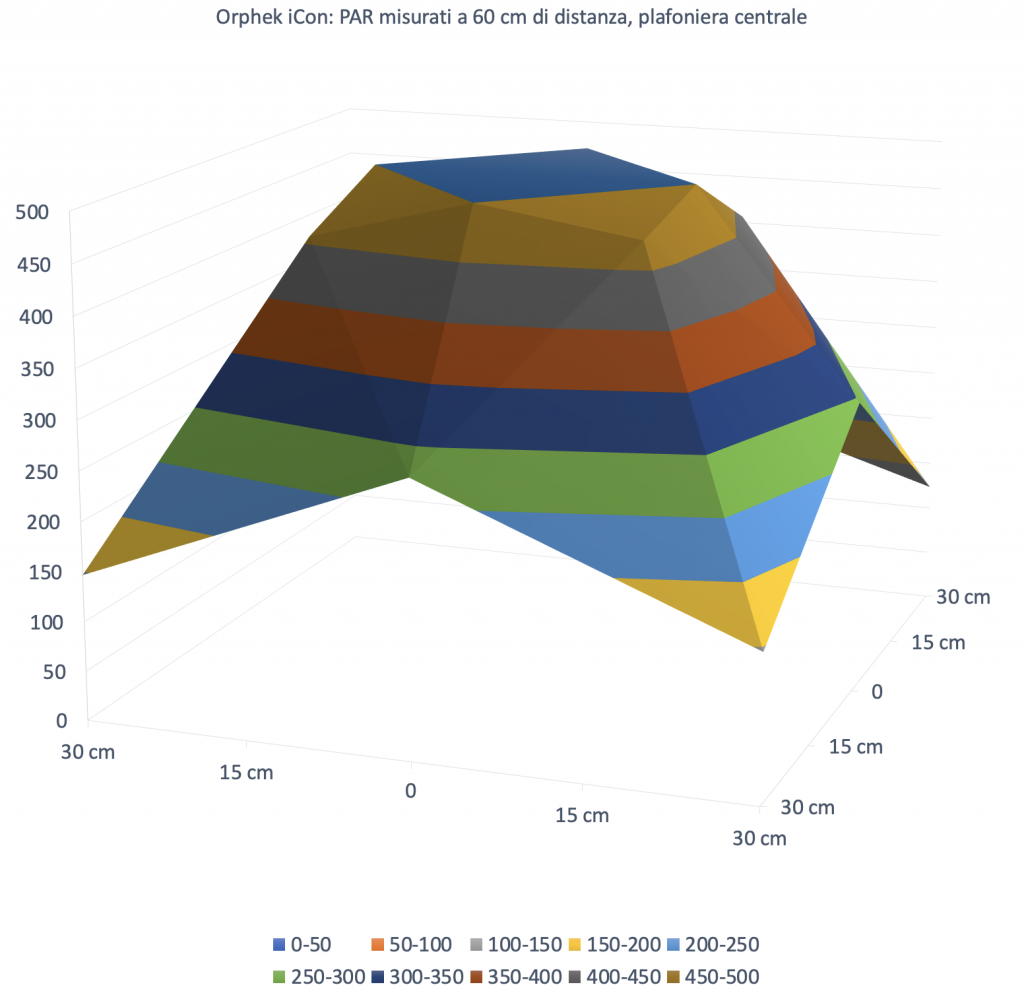
The differences are the same at 37 cm. We are now slightly under the Radion, but with a big difference of consumption. ATI Straton and Orphek iCon have a better power but a higher consumption, up until 63% for the Orphek.
The PAR in the middle in the different configurations
Let’s continue with our technical measurements. We can see how, in a chart, the PAR collected in the middle decrease in the three different distances of our tests.
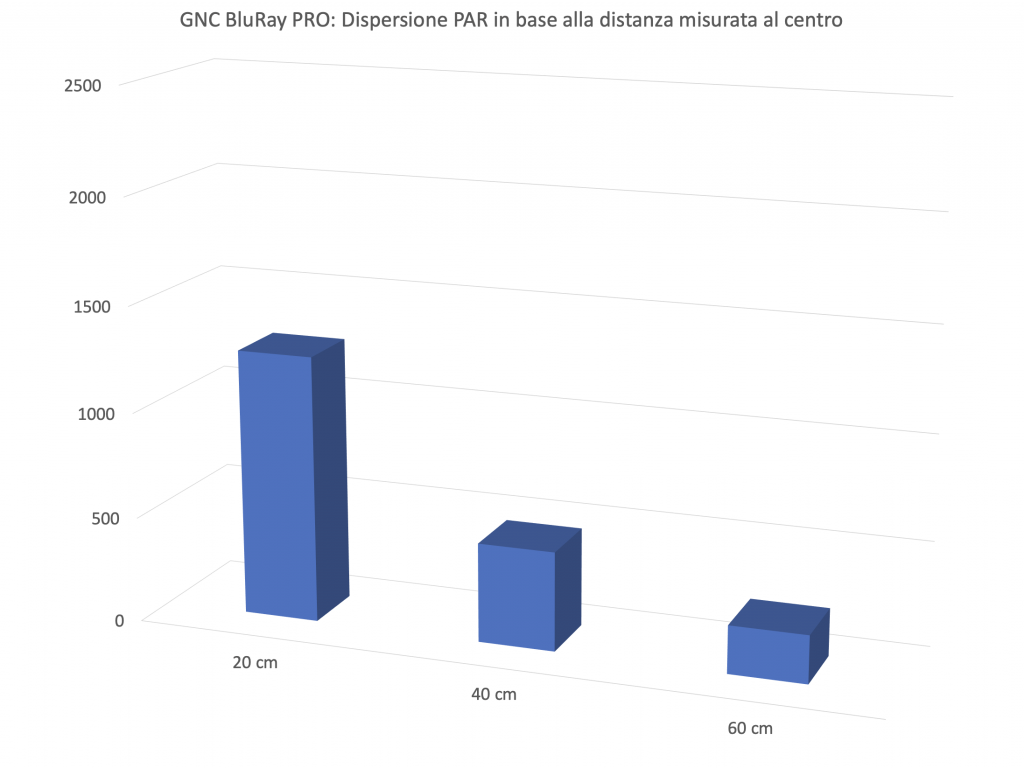
Energy variation of the GNC BluRay PRO depending on the distances
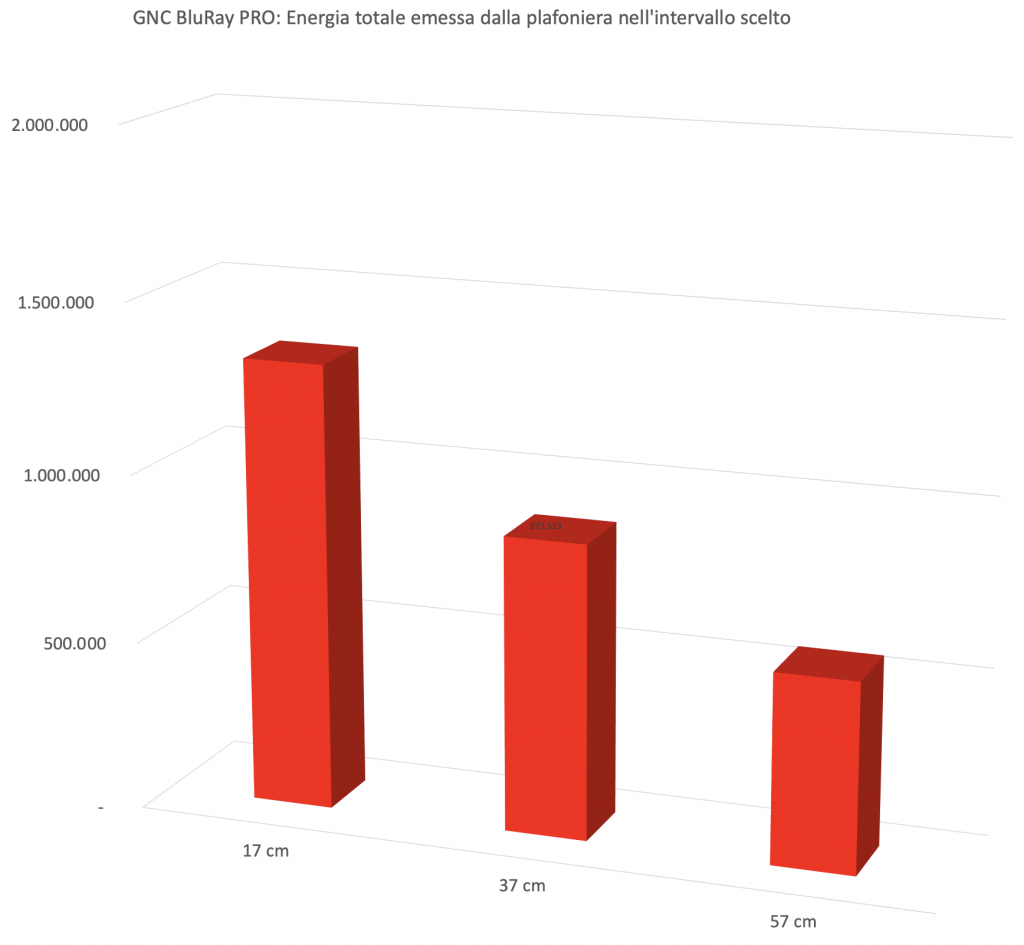
This is the most significant and most comparable data: the energy variation. We calculated the volumes of the three surfaces previously seen. It’s obvious that moving away from the ceiling light the PAR decrease, also because the light illuminates a wider space. In this way you can consider all the light energy contained in the 60×60 cm area subtended by the ceiling light. And the three values of 1.321.000, 874.000 and 564.000 assume a different connotation compared to the values in the middle. When the first ones decrease because of the increasing of the distances, the subtended area, that is the energy, decreases slowly.
For the GNC BluRay PRO the values drops as well as the sum of the energy, sign that big part of the light is dispersed laterally to increase the coverage. So it’s great for tanks up to 60 cm of width with a full coverage. However, it pays somewhat for having less power then other solutions, but the wide coverage allows also a remarkable reinforce of the light on the glass, increasing greatly the real PAR values in aquarium. But we’ll deepen this in the next paragraphs.
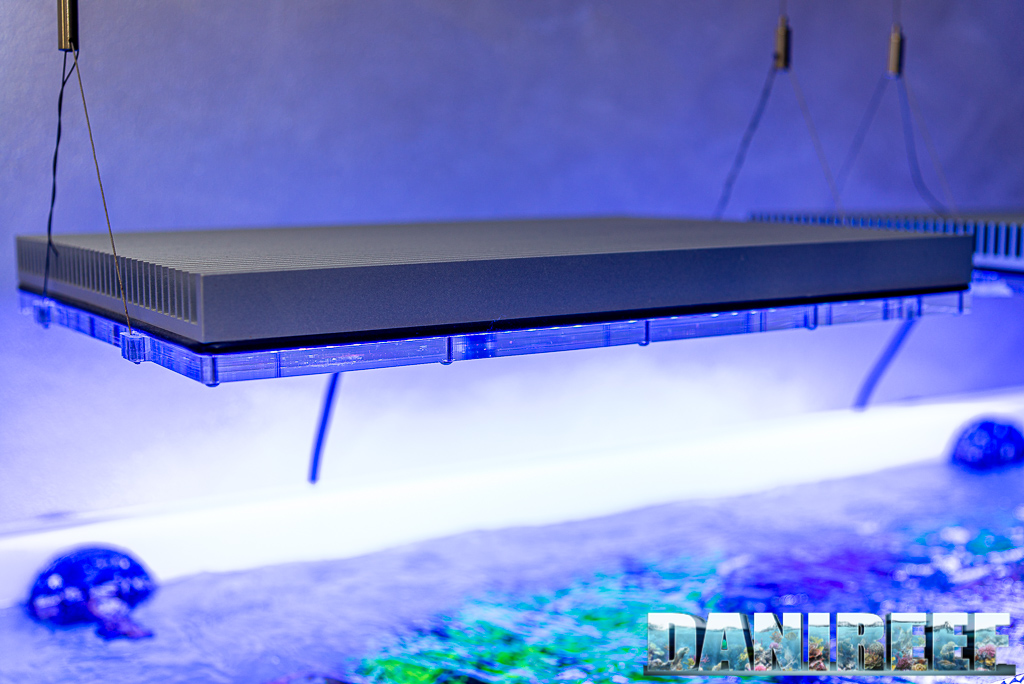
Power consumption
The measurement of the consumption was made possible thanks to the useful device RCE PM600 that can also measure the Cos(fi) (or power factor). The result is already given in watt.
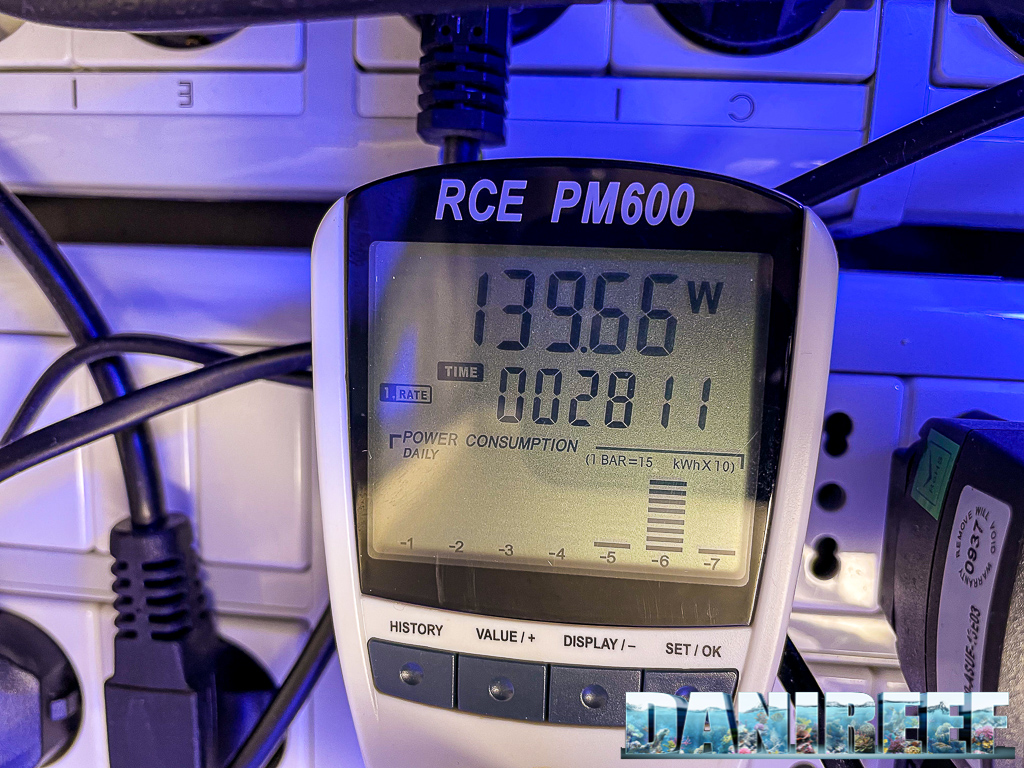
Here above there’s the maximum power and then the Cos(fi).
The GNC BluRay PRO has a power consumption of 139,66 watt compared with the declared 130 watt. For once, we have a consumption higher than declared. It’s rare! But 140 watt is extremely low. And in this context we have to analyze the PAR curves where it’s true that it has a lower output then other ceiling lights, but it does consuming much less.
Considering that at 17 cm the ceiling light has in the middle 1264 μmol m-2 s-1, we can say, in perspective, that it will have a peak value of 9,05 μmol m-2 s-1 w-1 (PAR per watt).
The GNC BluRay PRO and heat
The GNC BluRay PRO has a totally passive cooling system, and given the sizes of the aluminum flaps, we think that this lamp will never have heating problems.
Let’s continue on page three with the the costs, the comparison with other ceiling lights on the market and our final comment.






